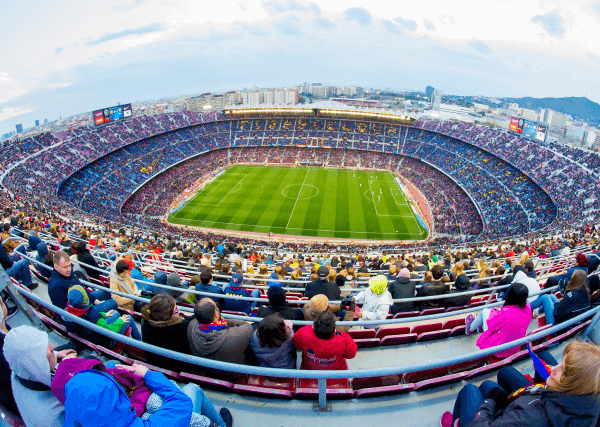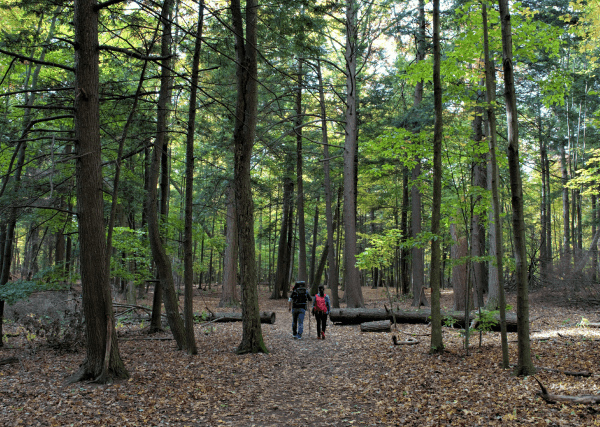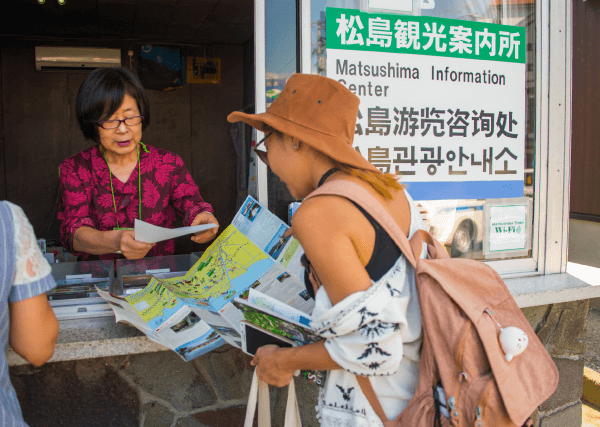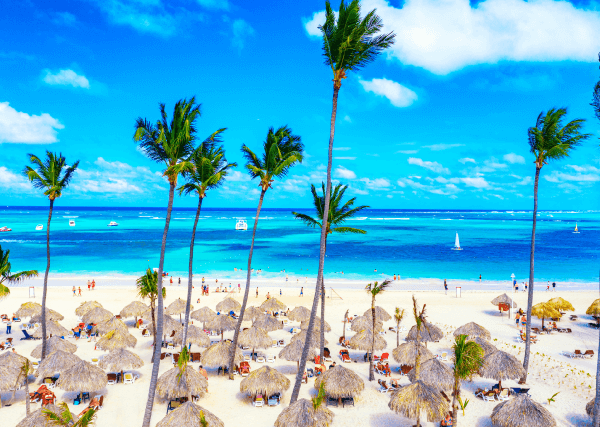To access the other concept sheets in the Tourism unit, consult the See Also section.
The characteristics of a tourist region vary from region to region, depending on the area's attractions and the type of tourism practised.
There are many reasons to travel, and therefore many different types of tourism. The following are some of the main types.
Beach tourism
Beach tourism, also known as seaside tourism, is generally practised on the shores of a sea or ocean. It offers activities such as scuba diving, surfing and sailing. People choose this form of tourism to enjoy a warm climate, sun and relaxation.
This form of tourism is widespread throughout the world. Several countries are renowned for their beaches, and therefore attract many tourists. Countries around the Mediterranean Sea, the Caribbean or Southeast Asia are some examples.
Adventure tourism
Adventure tourism is based on thrill-seeking activities and seeks to create unique experiences. Examples of these are rock climbing, rafting and skydiving.

Source: Photo Volcano, Shutterstock.com
Cultural tourism
Cultural tourism encompasses activities based on the cultural attractions of a place, such as the traces of an ancient civilization, monuments, museums, festivals, concerts or other cultural events.

Located in Paris, it is the most visited museum in the world.
Source: Kamira, Shutterstock.com
Entertainment tourism
Entertainment tourism, also known as recreational tourism, aims to provide entertainment. It usually takes place in locations created for this purpose, such as amusement parks, water parks or casinos.

This theme park attracts many visitors every year.
Source: Awana JF, Shutterstock.com
Sports tourism
Sports tourism can take 2 forms. The first involves activities related to the practice of a sport, such as skiing or mountain biking. The other is related to sporting events such as the Olympic Games.

This stadium, located in Barcelona, is one of the largest soccer stadiums in Europe.
Source: Christian Bertrand, Shutterstock.com
Nature tourism
Nature tourism, also known as outdoor tourism, refers to activities related to the discovery of nature, such as wilderness camping. National parks and other protected areas are places where nature tourism is practised.

Hiking is one of the most popular activities of nature tourism.
Source: NelzTabcharani316, Shutterstock.com
Other forms of tourism are practised throughout the world.
Religious tourism includes trips that have a religious purpose, such as visiting a sacred site.
Culinary tourism is about discovering local cuisine and visiting local markets and producers.
Business tourism is increasingly common in major cities around the world. It covers business-related travel, such as attending conferences or meeting clients.
Planning and development is the modification or transformation of a territory with the goal of making it accessible, functional and usable.
No matter what form of tourism is practised within a tourist region, extensive infrastructures are needed to prepare the area for the thousands, and sometimes millions, of tourists who visit every year.
There are 2 main types of development: those that meet the needs of tourists, and those that enhance tourist attractions.
All tourist areas must provide amenities to meet the basic needs of tourists.
|
Getting around |
In order to facilitate tourist travel, various transportation infrastructure must be available:
|
|
Food |
To meet the nutritional needs of tourists, restaurants and grocery stores must be built in various locations throughout the tourist region. |
|
Accommodation |
Tourists need a place to stay that is not too far from the sites they are visiting. That's why a tourist area needs accommodation options, such as hotels, inns, campsites, etc. |
In order to highlight the attractions found in the tourist region, site organization is required. These allow tourists to enjoy tourist attractions.
-
Tourist facilities (tourist circuit, observatory, information centre, etc.)
-
Tourist services (guided tours, information guides, equipment rental, etc.)
-
Souvenir stores
-
Facilities at historic sites (ticket-sales, toilets, checkrooms, etc.)
Some tourist areas organize special events and festivals (gastronomic events, sports, etc.). Infrastructure is also required to welcome visitors, such as entrances, bleachers, kiosks, etc.
Certain amenities may also be set up in order to protect the attraction in question, as is the case with marked trails in a national park or fences in a historical site.

Information centres help direct tourists to attractions and provide information on activities.
Source: Vassamon Anansukkasem, Shutterstock.com

Every year, this event attracts thousands of tourists from all over the world. A number of infrastructures must be built to accommodate visitors, such as bleachers, barriers, etc.
Source: Photocarioca, Shutterstock.com
To access the rest of the unit, consult the following concept sheets.
